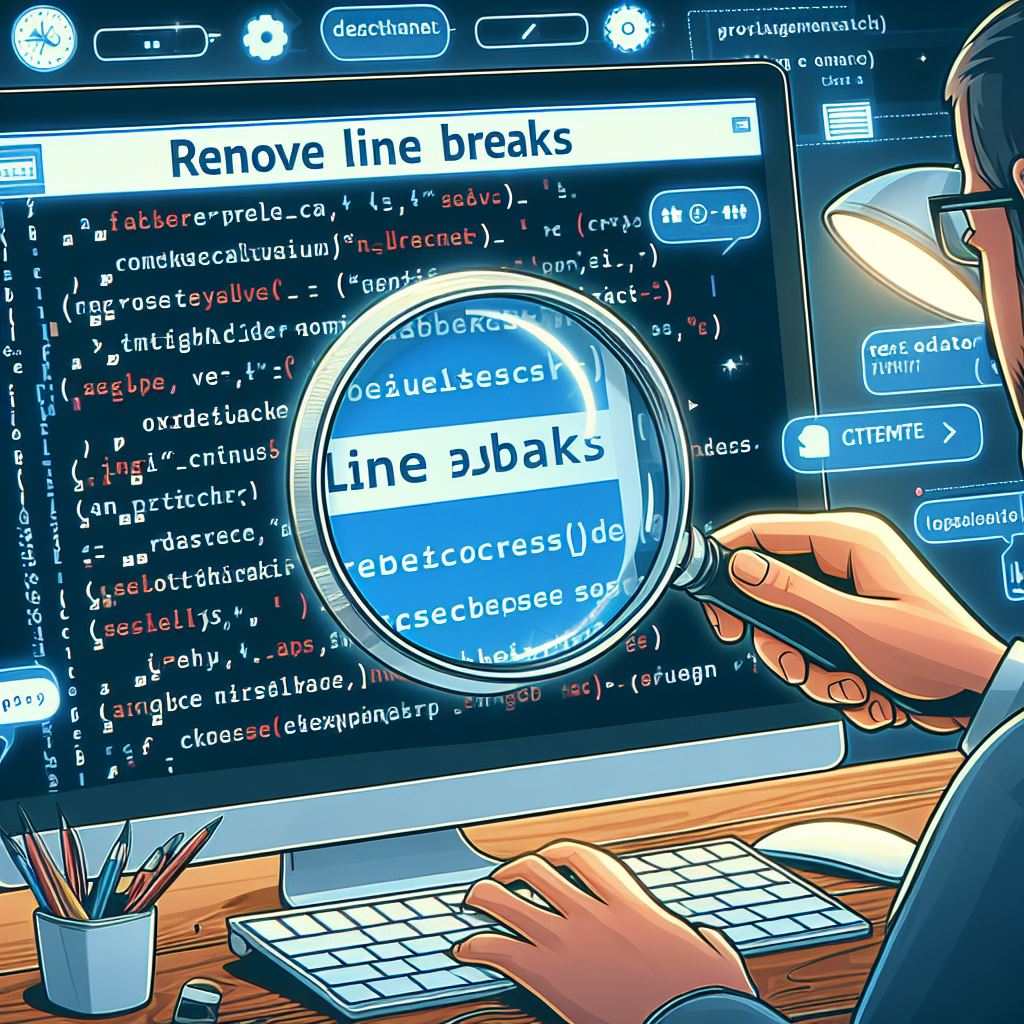Remove Line Breaks
Table of Contents
How to Safely Remove Line Breaks from Code Without Breaking Formatting
As a programmer or developer, you know how crucial it is to have clean and well-organized code. One of the most common issues that developers face is dealing with unwanted line breaks. These line breaks can cause formatting issues, making the code difficult to read and understand. In this blog post, we will discuss how to safely remove line breaks from code without breaking formatting.

Why Remove Line Breaks?
Line breaks are used to separate lines of code and make it more readable. However, sometimes they can cause issues, especially when working with large data sets. Removing line breaks can help reduce the size of the code, making it easier to manage and work with. Additionally, removing line breaks can help improve the performance of your code by reducing the number of lines that need to be processed.
How to Remove Line Breaks from Code:
There are several ways to remove line breaks from code, depending on the programming language you are using.
Here are some examples:
1. Removing Line Breaks in Python:
Python provides several ways to remove line breaks from a string. One way is to use the `replace()` function, as shown in the previous example. Another way is to use the `splitlines()` function, which splits a string into a list of lines and removes line breaks. Here's an example:
```python
text = "This is\nan example\nof a\nstring\nwith line breaks"
lines = text.splitlines()
new_text = " ".join(lines)
print(new_text)
```
This will output: "This is an example of a string with line breaks"
Note that the `splitlines()` function removes all types of line breaks, including Unix-style (`n`) and Windows-style (`rn`) line breaks.
2. Removing Line Breaks in Java:
In Java, you can use the `replace()` method to remove line breaks from a string. Here's an example:
```java
String text = "This isnAn exampleof astringwith line breaks";
String newText = text.replace("n", "").replace("r", "");
System.out.println(newText);
```
This will output: "This is an example of a string with line breaks"
Note that the `replace()` method removes both Unix-style (`n`) and Windows-style (`rn`) line breaks.
3. Removing Line Breaks in JavaScript:
In JavaScript, you can use the `replace()` method with a regular expression to remove line breaks from a string. Here's an example:
```javascript
let text = "This is an example of a string with line breaks";
let newText = text.replace(/n/g, "").replace(/r/g, "");
console.log(newText);
```
This will output: "This is an example of a string with line breaks"
Note that the regular expression `/n/g` matches all Unix-style (`n`) line breaks, while `/r/g` matches all Windows-style (`rn`) line breaks.
Advanced Techniques :
If you're dealing with large datasets or complex code, you might encounter different types of line breaks. Here are some advanced techniques for handling them:
1. Handling Different Line Break Types:
Unix-style line breaks (`n`) and Windows-style line breaks (`rn`) are the most common types of line breaks. However, you might encounter other types of line breaks, such as Mac-style line breaks (`r`). To handle different line break types, you can use regular expressions to match and replace them. Here's an example in Python:
```python
import re
text = "This is an example of a string with line breaks"
new_text = re.sub(r'r?n|r', '', text)
print(new_text)
```
This will output: "This is an example of a string with line breaks"
Note that the regular expression `r'r?n|r'` matches all types of line breaks.
2. Using Tools to Handle Line Breaks:
There are several tools available that can handle line breaks automatically. For example, the `dos2unix` tool can convert Windows-style line breaks to Unix-style line breaks, while the `unix2dos` tool can convert Unix-style line breaks to Windows-style line breaks. These tools can be useful if you're working with large datasets or collaborating with developers who use different operating systems.
We hope these additional sections provide more specific and advanced techniques for removing line breaks from code.
Tips for Removing Line Breaks Safely:
While removing line breaks can improve code readability and performance, it's important to do it safely. Here are some tips:
1. Backup Your Code:
Before making any changes to your code, make sure to backup your files. This will ensure that you can easily revert back to the original code if something goes wrong.
2. Test Your Code:
After removing line breaks, test your code thoroughly to make sure it still works as expected. This will help you catch any errors or issues that may have been introduced.
3. Use Comments:
If you need to remove line breaks from a section of code that is difficult to understand, consider adding comments to explain what the code does. This will make it easier for other developers to understand your code.
Conclusion:
Removing line breaks from code can improve readability and performance, but it's important to do it safely. By using a text editor, programming language, or regular expression, you can easily remove line breaks from your code. Just remember to back up your code, test thoroughly, and use comments to explain any complex sections of code.
If you found this blog post helpful,
please share it with your fellow programmers and developers.
And if you're looking for a free online tool to remove line breaks and maintain paragraph styles, check out our tool at [https://www.100freetools.com/remove-line-breaks].
another useful tool (Random Word Generator)








